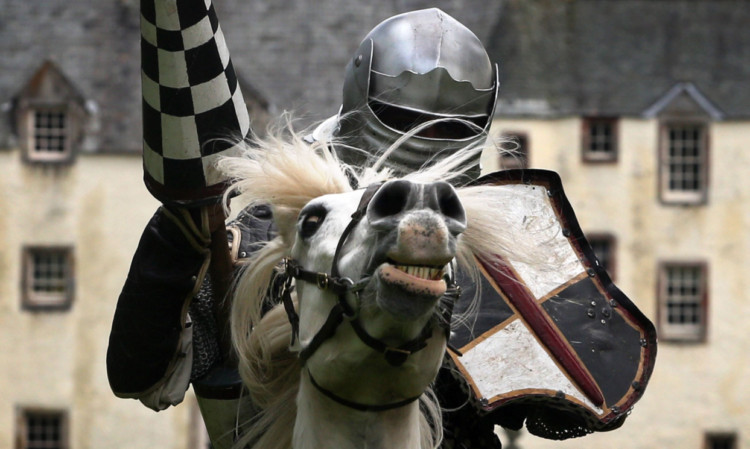Today marks the 500th anniversary of the battle of Flodden, a vicious war fought between the Scots and the English that resulted in devastating losses. Jennifer McLaren learns of its legacy.
The early years of the 16th century were a relatively peaceful time for Scotland and England. Scotland was a well-respected independent state and its king, James IV, had married Margaret Tudor, the daughter of Henry VII, King of England. In 1502, James IV signed a Treaty of Perpetual Peace with Henry VII, cementing cross-border relations, but this only lasted until 1509 when Henry VII died and his son Henry VIII ascended the throne, ready to make war with France.
Best known for being the stout, bearded king who took six wives, separated the Church of England from the Catholic Church and fathered Queen Elizabeth I of England, Henry VIII’s invasion of France in 1512 posed a difficult question for his brother-in-law.
As well as the treaty of peace James IV had signed with England was the small matter of the Auld Alliance with France, a shared need to curtail English expansion. Scotland’s king chose to support the French and launched an attack on England, a campaign that ended in defeat and a massive loss of life.
The Battle of Flodden took place in the fields to the south of Branxton, Northumberland, on September 9 1513 and led to the death of an estimated 10,000 Scots and 5,000 English soldiers. One hundred noblemen were killed, as was King James IV of Scotland the last king to die in battle on British soil. Compared with a battle such as Bannockburn, 1314, the history of Flodden is rarely taught in Scotland and has been largely forgotten in England. Only the inhabitants of the Scottish Borders and north Northumberland continue to remember the devastating war.
To enable the battle’s legacy to live on, an ecomuseum has been set up for Flodden linking together 12 sites from across north Northumberland, the Scottish Borders and Edinburgh, which have a connection with the story of Flodden.
Well established on the continent, an ecomuseum is a community-driven venture that links existing and new attractions to help preserve the heritage and traditions. There is also a programme of projects and events commemorating the battle as well as on-going excavations.
In contrast with Bannockburn which has a heritage centre in Stirling and celebrates its 700th anniversary next year the ecomuseum is driven by members of local communities with the help of experts in history and archaeology. Project manager for Flodden 1513 Alistair Bowden says: “Bannockburn played a seminal role in the wars of Scottish independence and, from a Scottish perspective, it was critical.
“If you look at it from a European perspective, Bannockburn was about Scotland and England alone, whereas Flodden was the culmination of a pan-European power struggle involving the king of Spain, the Pope, the king of France, the Holy Roman Emperor (who was, in effect, the king of Germany) and the kings of Scotland and England.
“Bannockburn has always been taken very seriously in Scotland’s culture and it has always had a higher profile, partly because it was a win and a particularly significant win.”
During his reign James IV succeeded in establishing peace between Scotland and England and was a well-respected intellectual who had a profound influence on the country’s culture and education. His brother-in-law, however, was not viewed in the same light.
Alistair goes on: “Henry always comes across as a bit pompous and he did seem to be trying to rile Scotland for the sake of it rather than with any political purpose. In contrast, his father was a very astute politician.”
When it came to taking sides, it was not a simple choice for James IV, but he believed in Scotland’s ability to win: “Prior to Flodden, the Scottish had won a series of victories and all of those sites are part of the story.”
Flodden turned out to be a bloody fight to the death and according to Alistair, calculations suggest it was proportionally worse for Scotland than the First World War in terms of the number of men who died in relation to the size of the population. Following the death of James IV there was another unsettled period between the two nations especially for those living on the borders.
Scotland lost its status in Europe and it would be 90 years before James IV’s great-grandson James VI (James I of England) unified the two crowns following the death of his mother, Mary, Queen of Scots, and Queen Elizabeth I of England.
Tomorrow, a service of commemoration will be held at Branxton church to mark the 500th anniversary of the battle. The fallen of both sides will be remembered in a series of readings and hymns. A lone Scottish piper will play Flowers of the Forest, a tune associated with Flodden and traditionally performed as an act of remembrance.
There is also an ongoing excavation at the site of the battlefield to locate the sites of the body pits. The aim is not to exhume but to confirm it as the site of the battle so it can be declared a scheduled ancient monument and therefore protected.
Alistair adds: “One hundred years ago they built a stone cross marked for the brave of both nations and I don’t think we could do anything greater for the 500th commemoration than protect the entire battlefield.”
